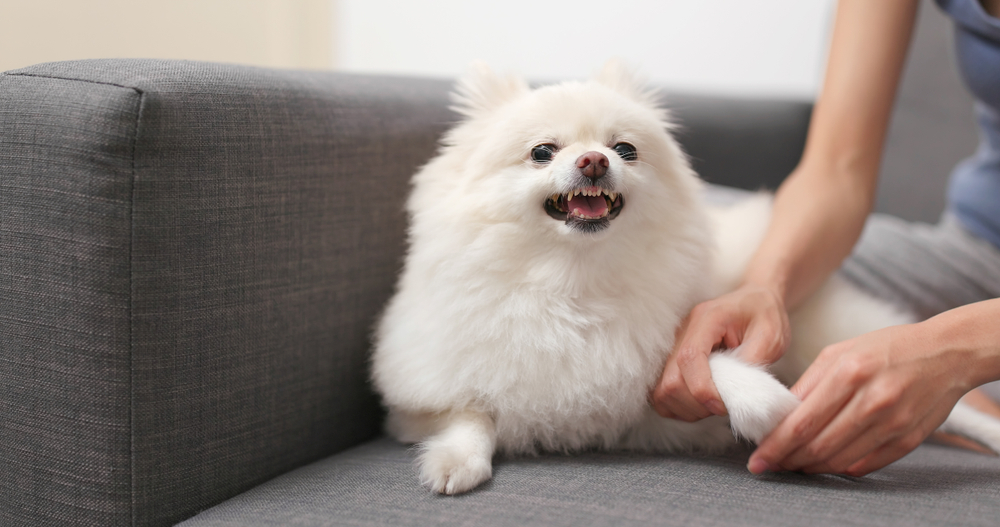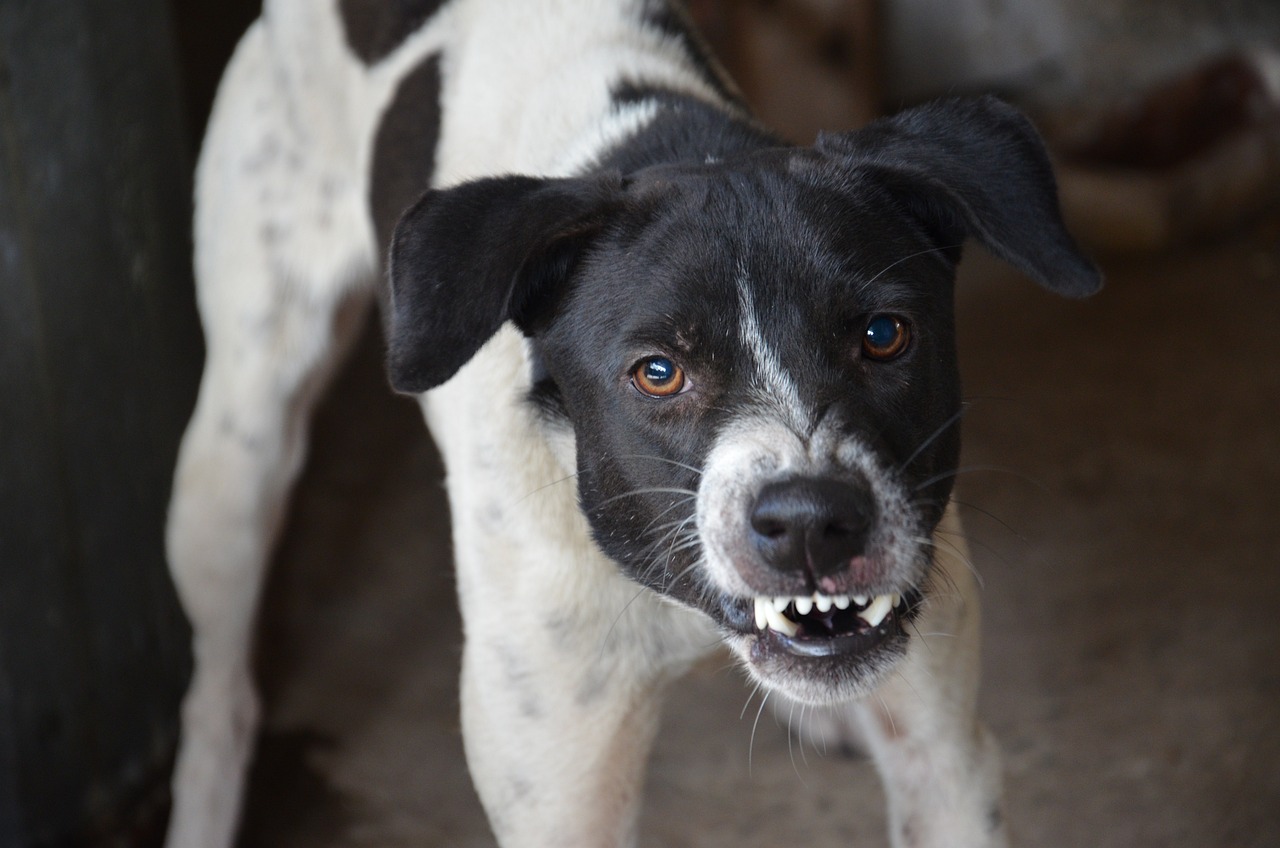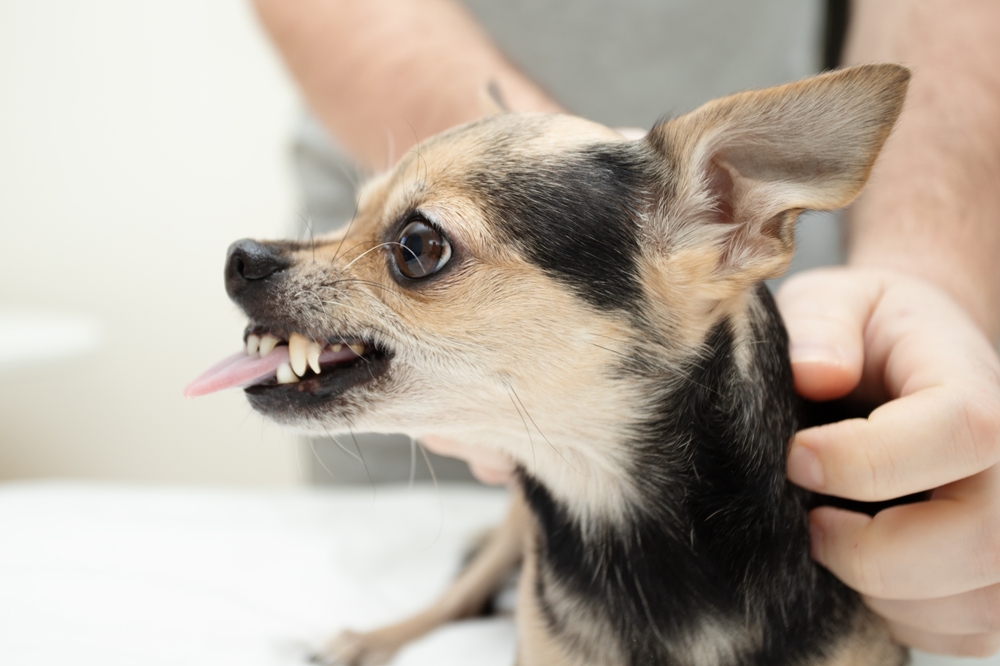Last Updated on August 1, 2024 by Dog Lover
Why Dogs Growl When You Pet Them
Dogs communicate with us through body language and vocalizations. One key way they express themselves is by growling.
Growls can vary from playful to aggressive, and recognizing the cause helps you react appropriately to support your canine friend.
Understanding the context of your dog’s growling is essential.
Below, we explore common reasons why dogs growl when being petted and offer tips to make them more comfortable, preventing escalation.

8 Reasons Dogs Growl When Petted
Feeling Threatened
A low, serious growl often serves as a warning. It typically occurs when your dog feels threatened.
A new person or animal might be the trigger, rather than your approach or petting. Your dog may be resource guarding if they possess a chew toy, food, or a favorite item.
Your petting could also prompt another pet to approach, making your dog feel threatened.
Fear
Fear can evoke a response similar to feeling threatened.
A dog with past abuse experiences may anticipate petting to turn into physical harm, even if you were not responsible for previous abuse.
Playing
A playful growl is distinct from a warning growl and may include yapping and a playful stance.
Dogs often bow forward with their front legs on the ground and rear raised. Your dog might be inviting you to initiate play. Grab a toy and join in for a few minutes.

Frustration
Frustration occurs when your dog isn’t getting what it wants. If you’ve denied your dog something and are petting them to comfort, the growl may signify frustration.
Frustrated growls can lead to nipping, so identifying and remedying the source of frustration is crucial.
Pleasure
Not all growls indicate aggression or frustration. Some dogs vocalize differently, producing a growling sound as a sign of pleasure, similar to a cat’s purr.
New dog owners might find this behavior unusual but ensuring it’s a pleasure growl is vital.
Aggression
Dogs growl aggressively to signal they want space or to end a situation. Irritation or vulnerability often triggers this response.
If you suspect your dog is growling aggressively, give them space and seek professional behavioral assistance promptly.
Pain
Dogs have limited ways to express pain. Growling may indicate discomfort, especially if your petting is near the source of pain.
A dog might warn you not to touch further if you’re close to the painful area.
Surprise
A startled dog might growl if you wake them to pet them. Some dogs naturally react this way when awakened.
Offer a warning before approaching, especially for dogs with challenging pasts, like those previously living on the streets.

What to Do If Your Dog Growls
If your dog growls while being petted, it typically signals discomfort or fear. Suppressing this communication can lead to biting.
Understanding the cause of your dog’s discomfort or fear is crucial.
Listening to your pet helps them feel secure, reducing the need to growl in the future. Here are steps to assist your dog:
Identify the Cause
Examine your dog’s position, prior activities, and any other pain, discomfort, or anxiety signs.
This analysis aids in pinpointing the growl’s cause and deciding on the best preventive actions.
Stay Calm
Strong reactions are rarely helpful. Avoid shouting or hitting your dog. If the growl stems from fear or anxiety, harsh responses can worsen it.
Take a step back, assess the situation, and use the moment to identify the behavior’s cause.
Eliminate the Cause
Once identified, remove the stressor from your dog’s environment. If a person or animal causes the growl, have them step back.
For growling triggered by specific objects, limit access temporarily. Consult a vet for pain-related growling to diagnose and treat the issue.
Redirection
Redirection is valuable for addressing anxiety or fear. Divert your dog’s attention with a toy or activity they enjoy.
Take a walk or play fetch to shift focus and strengthen your bond.
Get Help
If your dog requires medical attention, consult a vet. For fear, anxiety, or aggression, seek advice from a behaviorist.
Experts can create behavioral modification programs using positive reinforcement techniques to help your dog become a happy family member.

Conclusion
Dogs growl for various reasons, including play and aggression. Some dogs even growl to express pleasure.
If you’ve never encountered a dog that growls when content, recognizing this behavior can be challenging.
A dog growling at you can be tense and upsetting, but responding appropriately is essential.
Prioritize safety by moving out of harm’s way if necessary. Then, take time to analyze the situation and understand the growling’s cause.
Once you’ve identified the trigger, you’ll be better equipped to decide on the next steps, whether contacting a vet, distracting your dog, or getting accustomed to a dog that growls when enjoying attention.
FAQs
What should I do if my dog growls while being petted?
Stay calm and avoid harsh reactions. Assess the situation to determine the cause of the growling. Remove any stressors and consider consulting a vet or a behaviorist for further guidance.
Can a dog growl out of happiness?
Yes, some dogs produce a growling sound when they are content or happy, similar to a cat’s purr. It is important to understand your dog’s vocalizations to distinguish between pleasure growls and other types of growls.
Is growling a sign of aggression in dogs?
Not always. Growling can indicate a variety of emotions, including fear, frustration, or even playfulness. Context and body language are crucial for understanding the reason behind a dog’s growl.
How can I tell if my dog’s growl is playful or aggressive?
A playful growl is usually accompanied by a relaxed body posture, wagging tail, and a playful stance, such as bowing. An aggressive growl is often deeper and accompanied by stiff body posture and other signs of tension.
What if my dog’s growling is due to pain?
If you suspect your dog is growling because of pain, consult a veterinarian immediately. The growl might be a warning to avoid touching a painful area, and professional help is needed to address the underlying issue.

















